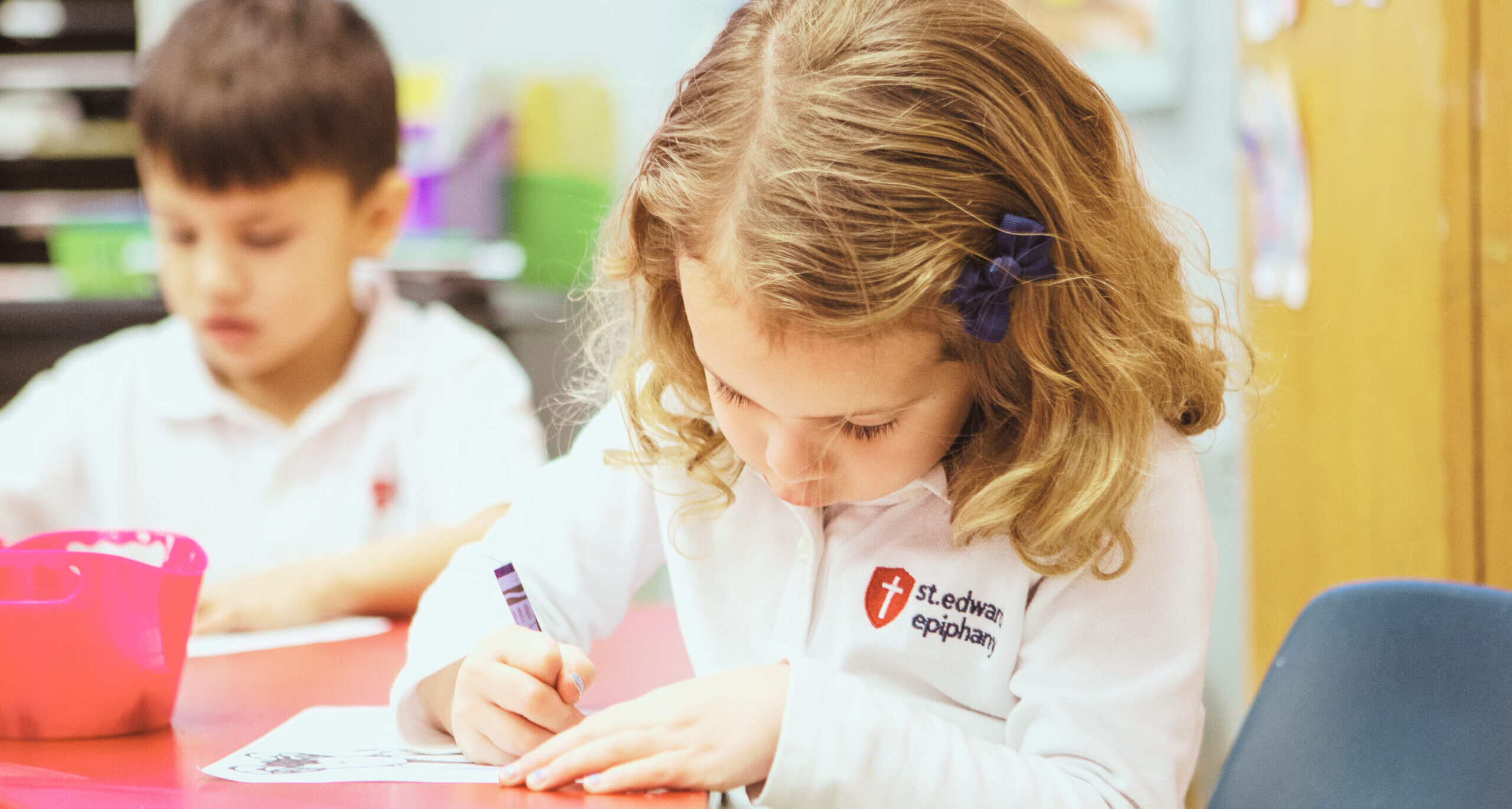Junior Kindergarten
In Junior Kindergarten, we strive to create a classroom environment rich with opportunities for multi-sensory and exploratory learning. Please join us as we take a virtual tour of our classroom!
Students begin each morning with free play- a time where the children are encouraged to explore learning activities throughout the classroom. Students may choose to visit the art area where they can strengthen their fine motor skills by coloring, using play-doh, or painting with water colors. Our dramatic play area encourages imaginative play by using real-world props that correlate with our studies. Construction allows students to sprawl out on the carpet and be creative as they work together to build railway systems, racetracks, sky scrapers, or forts. For those students wishing to start their day off on a quieter note, they may chose to visit our listening center or classroom library equipped with bean bags, audio stories, tubs of multi-disciplinary books, puppets, and thematic big books. The intent of free play is to engage students in learning opportunities that interest them. Equally important is the notion that this exploratory time allows students to build stronger social skills as they learn to communicate and work together with their peers.
We move from exploratory learning to teacher-directed instruction during Circle Time. The students gather on our carpet to learn our curriculum skills in math, literacy, science, and writing. During this time, students learn how to identify and write the letters of our alphabet; listen to thematic stories that build on our background knowledge and vocabulary; create patterns in math; and recite our calendar skills each morning.
Children then move to Centers where they apply the skills introduced in Circle. Our Centers are designed to be a hybrid of both structured learning activities and inquiry-based projects. They are multi-disciplinary and support our core curriculum benchmarks. For example, our Arctic Adventures unit correlates with our letter Pp studies. Thus, students visit the library center where they listen to audio books about Penguins and Polar Bears. In math, they create “polar patterns” using polar animal manipulatives. In art, the students build their fine motor skills by painting polar bears with “puffy paint”. In writing, the students practice writing our names, numerals, and thematic words using “snow” (shaving cream). Our activities are differentiated so that the instruction is tailored to meet the individual academic and motor needs of our students. We want each child to feel successful in his/her learning efforts.
In addition to our academics, our preschoolers participate in a class outreach project that demonstrates how small acts of kindness can make a big difference in the world. This year our students are helping earn money and supplies for our local SPCA. The children contribute by helping their parents with activities around the house to earn “Pennies for Pets.”
Our philosophy in Junior Kindergarten is to engage our students in a myriad of learning opportunities that promote kinesthetic, artistic, spiritual, and inquiry-based connections to our curriculum. Our goal is for our students to grow into confident, inquisitive learners who are both academically and socially prepared for kindergarten and beyond. We look forward to meeting your family!
Kindergarten
The kindergarten curriculum serves as a bridge between the play-based preschool curriculum and the standards-driven first grade classroom by including time for both challenging learning activities and student-centered play choices within our day. We integrate language arts, mathematics, religion, science, and social studies along with fine arts, library skills, technology, and physical education in a developmentally appropriate program set up to meet the individual needs of our students in a safe, friendly, and positive environment.
When teaching Language Arts in kindergarten, we use a balanced approach to literacy by incorporating the best parts of two programs, Words Their Way and Harcourt Storytown. Ours is a success-oriented program that enables students in a heterogeneous class to develop a strong foundation in phonological awareness and other pre-reading skills so that they can become successful readers as they progress with the Language Arts curriculum in the other grades. We use research-based best practices to ensure success for those students who may need extra help, support, and encouragement as well as for those students who come into kindergarten already reading and ready for more complex comprehension, reading, and writing development.
First Grade
Language Arts: Reading
- Demonstrate competence in the general skills and strategies of the reading process
- Develop decoding of words according through the systematic phonics rules
- Recall the sequence of events in stories
- Discuss story elements such as plot, character, events, and setting
- Identify the main idea and details in a story
- Develop comprehension skills and fluency
Writing/Spelling
- Writing demonstrates competence in the general skills and strategies of the writing process
- Writes with a command of the grammatical and mechanical conventions of composition
- Correctly spell 130-150 words applying phonics rules and memorizing sight words
Listening and speaking
- Demonstrates competence in speaking and listening as tools for learning
Language
- Understand basic punctuation
- Write in complete sentences
Literature
- Demonstrates a familiarity with selected literary works of enduring quality
- Develop an appreciation of good literature
Math
- Describe and compare numbers, recognize number patterns
- Develop addition and subtraction concepts, strategies, and word problems
- Organize and use data
- Develop addition and subtraction strategies
- Identify time to the hour and half hour
- Compare measurements
- Identify and count coins
- Identify geometric figures
- Understand place value
- Describe and identify fractional parts
- Solve two-digit addition and subtraction problems
Science
- Earth and Space Science
Investigate the relationship between the sun and the earth, their properties and locations - Life Science
Name the five senses and how we use them
Observe and classify objects as living, non-living, plant or animal
Identify parts of plants, their functions, and their life cycles - Physical Science
Describe the physical properties of solids, liquids, and gasses
Classify objects by observable properties
Experiment with the force of magnets
Discover that sound is produced by vibrating objects - Science as Inquiry
Recognize that scientific investigation is a process
Predict possible outcomes/results
Social Studies
- Identify groups that make up a community and describe how individual and group needs are met
- Develop an awareness of the human dignity of all people and their heritage
- Identify one’s rights and responsibilities as a citizen
- Identify national landmarks, patriotic symbols, and the beginning of the history of America
- Identify and compare how life was different 150 years ago
- Distinguish between wants and needs
- Differentiate between good and services, buyers and sellers
- Recognize map symbols and cardinal directions
- Identify and locate our city, state, country, and continen
- Identify the continents
- Identify ways we can help our environment
Religion
- Recognize that there are three persons in one God
- Reverence the Bible as the revealed Word of God
- Recognize Mary as Jesus’ mother and the Mother of our Church
- Recognize that all people are part of God’s family and loved by God
- Recognize the sacrament of Baptism as a sign of belonging to God’s family
- Recognize prayer as talking and listening to God
- Celebrate the seasons of the liturgical year
Second Grade
Second Grade is an exciting time for learning. Our curriculum is designed to incorporate all subject areas while developing strong, independent learners. Students will develop critical thinking skills, study skills as well as auditory and visual skills. We provide a variety of learning activities to meet the individual needs of each student within each classroom.
Language Arts
- Read and comprehend various types of writing samples
- Grammar
- Completion of well-organized paragraph
- Words Their Way
- Oral Communication
Math
- Addition and Subtraction with regrouping up to 3 digits
- Fractions (through 1/12)
- Money/Time/Measurement
- Geometry
- Problem Solving Strategies
Religion
- Prayers and Liturgy
- Teaching of the Church and Faith
- Church History and Traditions
- Sacraments
Social Studies
- First Americans
- Civics
- Economics
- Ancient Civilizations
Science
- Life Science (Living Things; Habitats)
- Earth Science (Earth’s surface, Space, and Weather)
- Physical Science (Matter and Energy in Motion



